Mauna Kea Triathlon – part 1
Without the massive volcanoes that emerge from cracks in the crust of the earth deep beneath the ocean’s surface the islands of Hawaii, Iceland or the Canary Islands would not exist. For over 30 years, the Big Island of Hawaii has provided a home to the Hawaii Ironman. Legends have been created by Dave Scott, Natascha Badmann, Paula Newby Fraser and Craig Alexander, to just name a few of our champions who have performed heroic feats that have made a pilgrimage to this island a compelling life achievement for many a triathlete. When the Hawaii Ironman was moved from Oahu to Kona in 1981, a course was chosen that is perhaps the least challenging on the island. Not that the current course is easy by any means, but the rest of the topography of the island essentially consists of roads paved along the flanks of various volcanoes.
As triathlon has expanded worldwide over almost 40 years, many aspects of the sport have been standardized. Olympic tris, half Ironmans, and full Ironmans are dropped into various cities worldwide with fairly standardized formats and stringent distance requirements. As a sport, perhaps we take more from running and swimming, where races are generally run over known distances. What we miss in doing this is the beauty of taking advantage of a location’s natural topography. In cycling, aside from time trials, most road events are contested over fairly random distance, as a result of having to use available roads, leveraging natural topology for challenges and of course, and of course road closures.
Today, few events are developed to take advantage of natural topology; rather event organizers gravitate towards standard distances. In this milieu, race directors like John McGovern the organizer of the American Zofingen duathlon in New Platz NY, or Kyle Yost, who puts on the Savageman festival Maryland are in the minority. These are events put on for athletes by athletes. They don’t put on events to maximize revenue; rather, they want to invite athletes to experience challenging venues in their backyard. The same can be said about the Norseman Extreme Triathlon in Norway, essentially an uphill Iron distance event run out of a fjord in Norway, ending on a mountain top. Or the Alpe d’Huez tri, which this coming year, will be held 1 week after the Tour de France completes a stage on that mountain that will climb the famed mountain twice in a single stage.
Coming back to Hawaii, in a previous article we followed Dan Empfield’s jaunt to the top of Kaloko in Hawaii. This is essentially a 5100 foot climb straight out of Kailua Pier. What else is there to do in Kona other than the Hawaii Ironman that might ‘rip the legs off’?
While racing in the Hawaii Ironman more than a few have been in awe and inspired by the twin volcanoes of Mauna Kea and Mauna Loa, sitting off to the right of the QueenK as riders head towards Hawi. Without them, there is no big island. In fact, from the floor of the ocean, to the top of Mauna Kea, you have a total of greater than 30000 feet. The Hawaii Ironman happens around sixteen feet up from the bottom of this massive mountain. There is almost 14000 feet from Kailua Pier to the summit of Mauna Kea. A right turn off the Queen K at Waikaloa, on left turn onto Belt Road, a right on saddle road and then another left turn at the Mauna Kea access road, and 14000 feet of vertical later, you could end your day at the summit of Mauna Kea rather than follow the beaten path over 140.6 miles to the finish line at Alii drive.
The Hawaii Ironman started as a bet by a bunch of guys whose sanity might be questions. Take the three most difficult races in Oahu between swimming, biking and running, string them together and let’s see who is the toughest athlete. In 1981, they moved this freak show to Kona on the flanks of Mauna Kea. But what if we had someone thinking like Kyle Yost at Savageman and thought it might be an interesting challenge to end the new race at the summit of Mauna Kea up at 14,000 feet high rather than down at the Pier. Alas, we will never know where the sport would have gone if the sport had taken that turn in 1981. Or a turn that meant changing the distances to take advantage of some of Kona’s most amazing riding. Nevertheless, mountain top finishes in triathlon are not exactly practical. Organizers needs to find a way to stage multiple transition zones and bring athletes back from mountain top finish locations to where the hotel are.
But we don’t necessarily need race organizers to make amazing challenges a reality. Do you need to actually enter a formal race to do a “triathlon” or like runners, can we just be runners without entering events. Many of us have friends and colleagues at work or in our social group who never enter events. They just run. Every day when they go exercise at lunch, or in the morning or after the kids are asleep, they do “a run”. For some reason, as triathletes we feel that we “need” to enter a formal event to say “I did a triathlon today”. But that is an unnecessary shackle that we place on ourselves as triathletes. We can do a self generated triathlon any time, just like we might do a self generated run, or bike or swim.
So in that vein, we started the talk about the Mauna Kea triathlon. What would it look like? What would the logistics be ? What do we need to do to pull it off? What type of fitness would be required? What type of gearing would be needed? Where will we get nutrition? Can this be done with or without support? Which roads should we use? Where would we swim? Where do we put “T2” and start the run? How will be affected by altitude going from sea level to 14,000 feet high in a single shot? Is this even humanly possible?
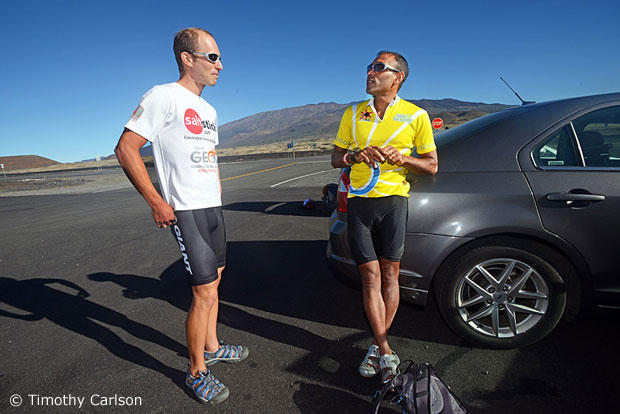
The week of the Hawaii ironman offered the opportunity to do an exploration of the potential options. I was in Hawaii to help with the timing crew and also help Tim Carlson with some of Slowtwitch.com’s coverage of the World Championships on Saturday. As part of writing about "age grouper lifestyle", Jonathan Toker, CEO of Saltstick joined in for the mission, along with support and photography from Tim Carlson. Prior to the trip, we were given a lot of input by a variety of cyclists with experience on Mauna Kea. Some pro cyclists said, “the winds might just kill you” and you “better have gearing” and “Mauna Kea is probably the single toughest climb you will ever do”, you listen. To say this is hard is an understatement. Between the grade of the mountain, and the lack of oxygen, Mauna Kea, makes Mont Ventoux of Galibier look like “second rate climbs”….and both of these make Alpe d’Huez look like warm up climbs, and Alpe d’Huez makes the Beast at St. Croix or Nasty Grade at Wildflower, look like neighborhood speed bumps.
Below are a few more pictures from this event.
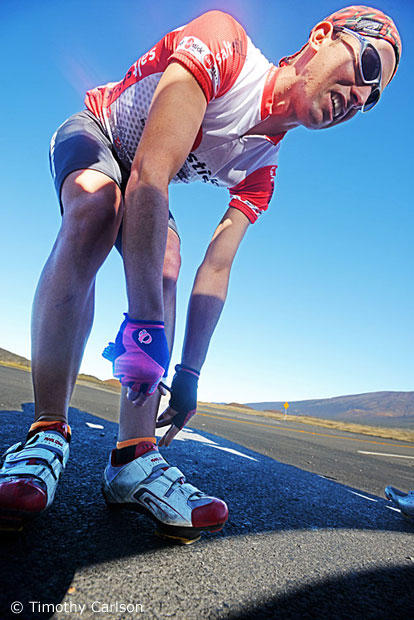
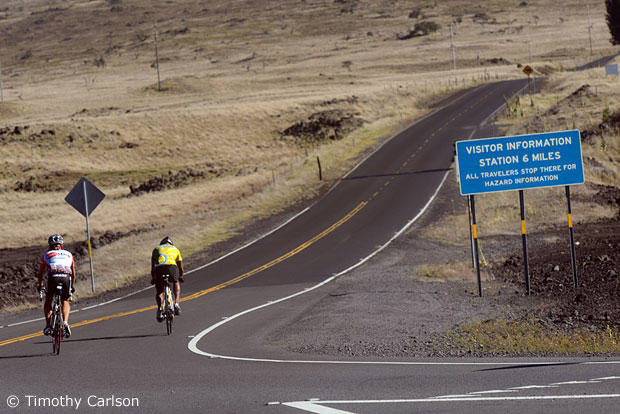
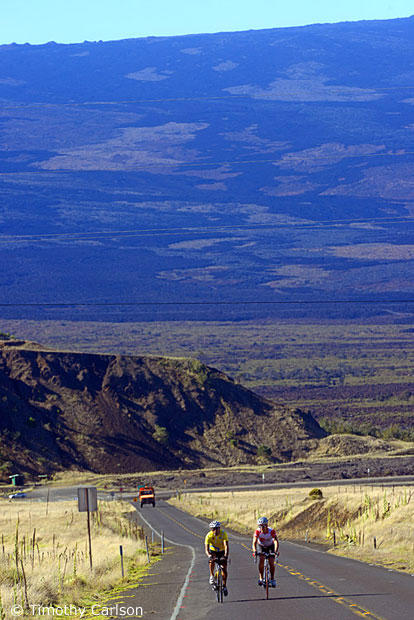
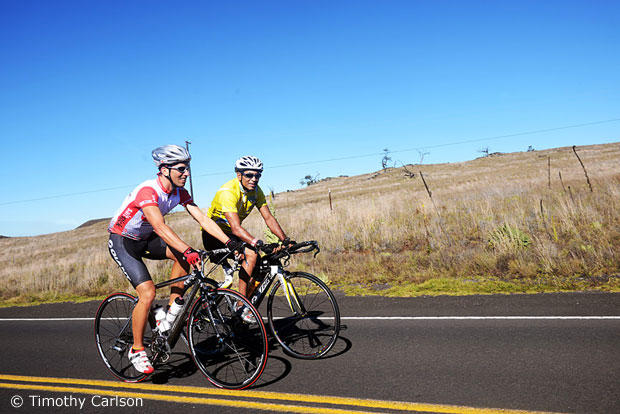
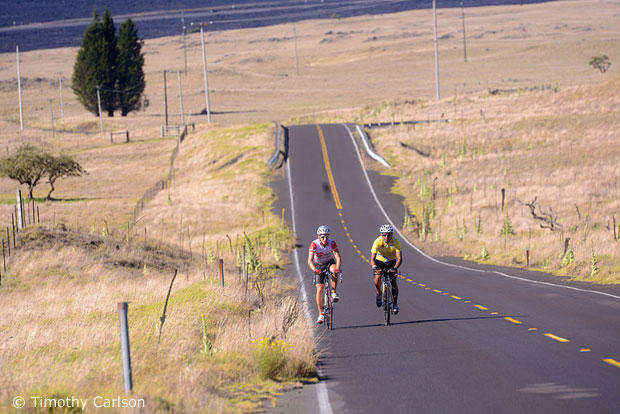
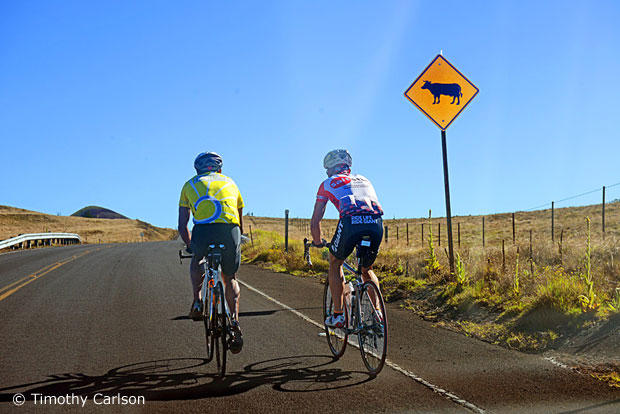
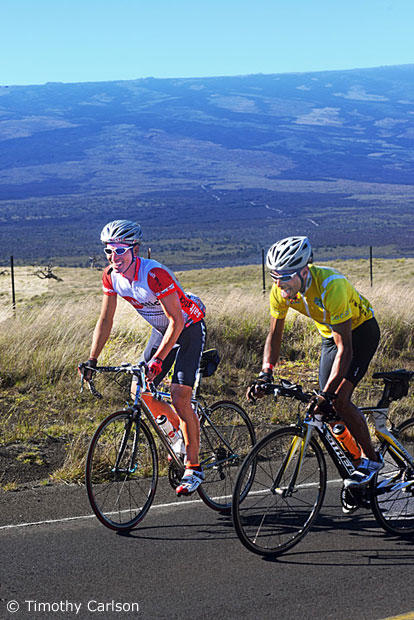
In part 2 we dive into coverage of the Slowtwich trip up this mountain and some of the experience and inherent challenges. Then we lay down the challenge to see who will be the first to "triathlon the way to the Mauna Kea Summit from Kona."
All images © Timothy Carlson / slowtwitch.com



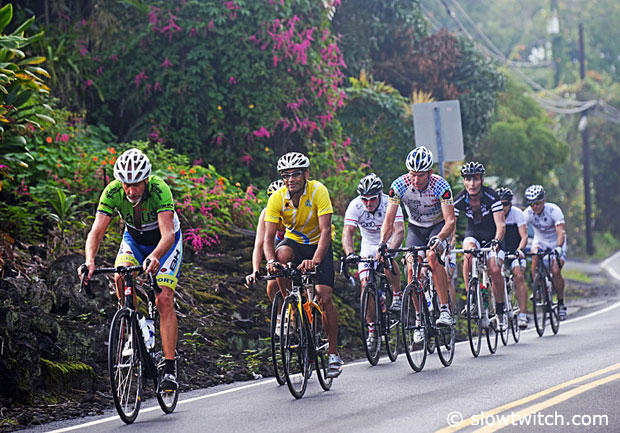
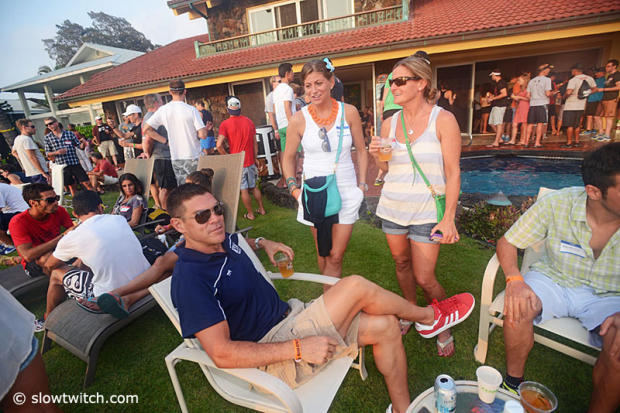

Start the discussion at forum.slowtwitch.com